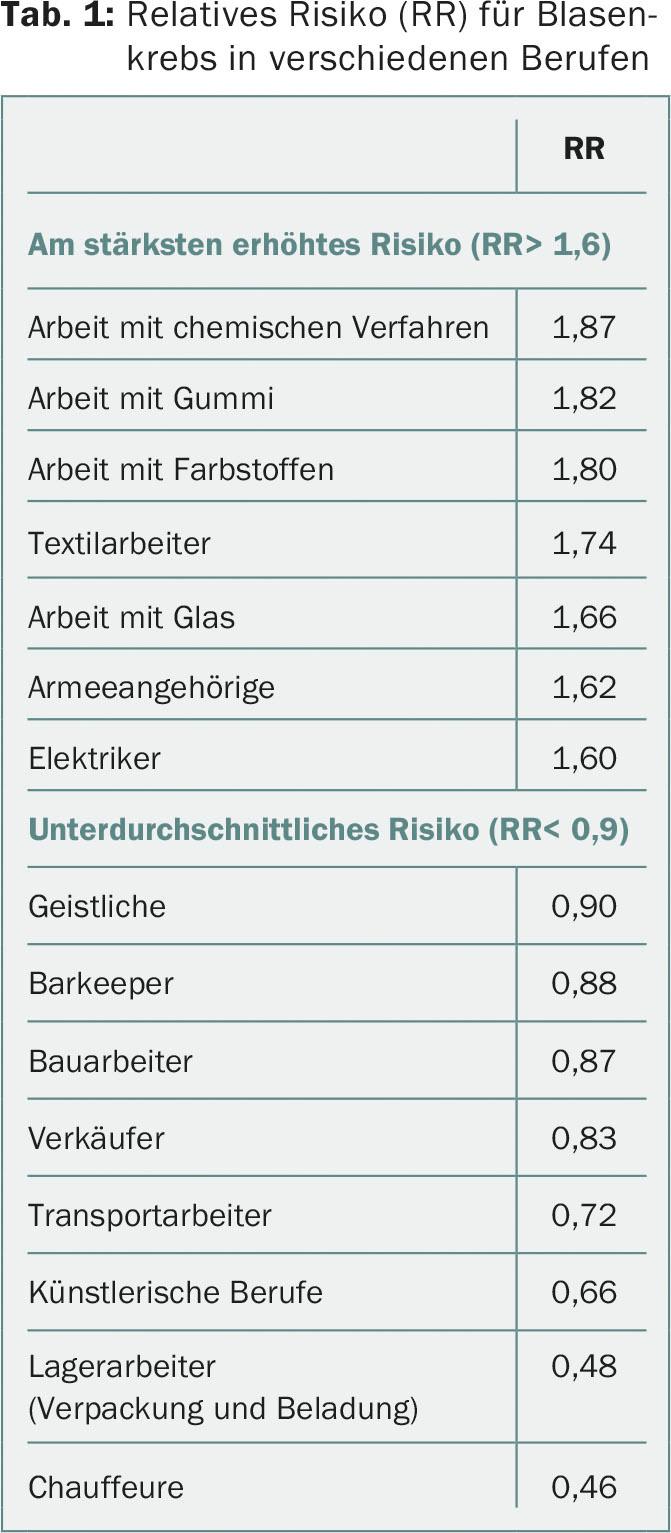Carcinogens that enter the body through respiration or with food are filtered out by the kidneys into the urine and temporarily stored in the bladder. There, the carcinogens can act on the mucosa for a long time before they are excreted. For this reason, bladder cancer is often the result of exposure to carcinogens. By far the most important risk factor is smoking, but already in second place among bladder cancer risks are occupational activities involving exposure to carcinogens. In a meta-analysis, British researchers investigated in which occupations the risk of developing bladder cancer is highest [1].
Data from 25 studies involving a total of 702941 individuals in the United Kingdom were analyzed. The risk of bladder cancer is highest for workers who work with chemical processes (tab. 1) . Work with rubber, dyes, textiles or glass is also high-risk. Other people at risk include electricians, service workers, and healthcare workers. The risk is below average for artists, warehouse workers and chauffeurs, among others.

Literature:
- Cumberbatch M, et al: The contemporary landscape of occupational bladder cancer within the United Kingdom: A meta-analysis of risks over the last 80 years. BJUI 2016, doi: 10.1111/bju.13561.
InFo ONCOLOGY & HEMATOLOGY 2016; 4(5): 4.












